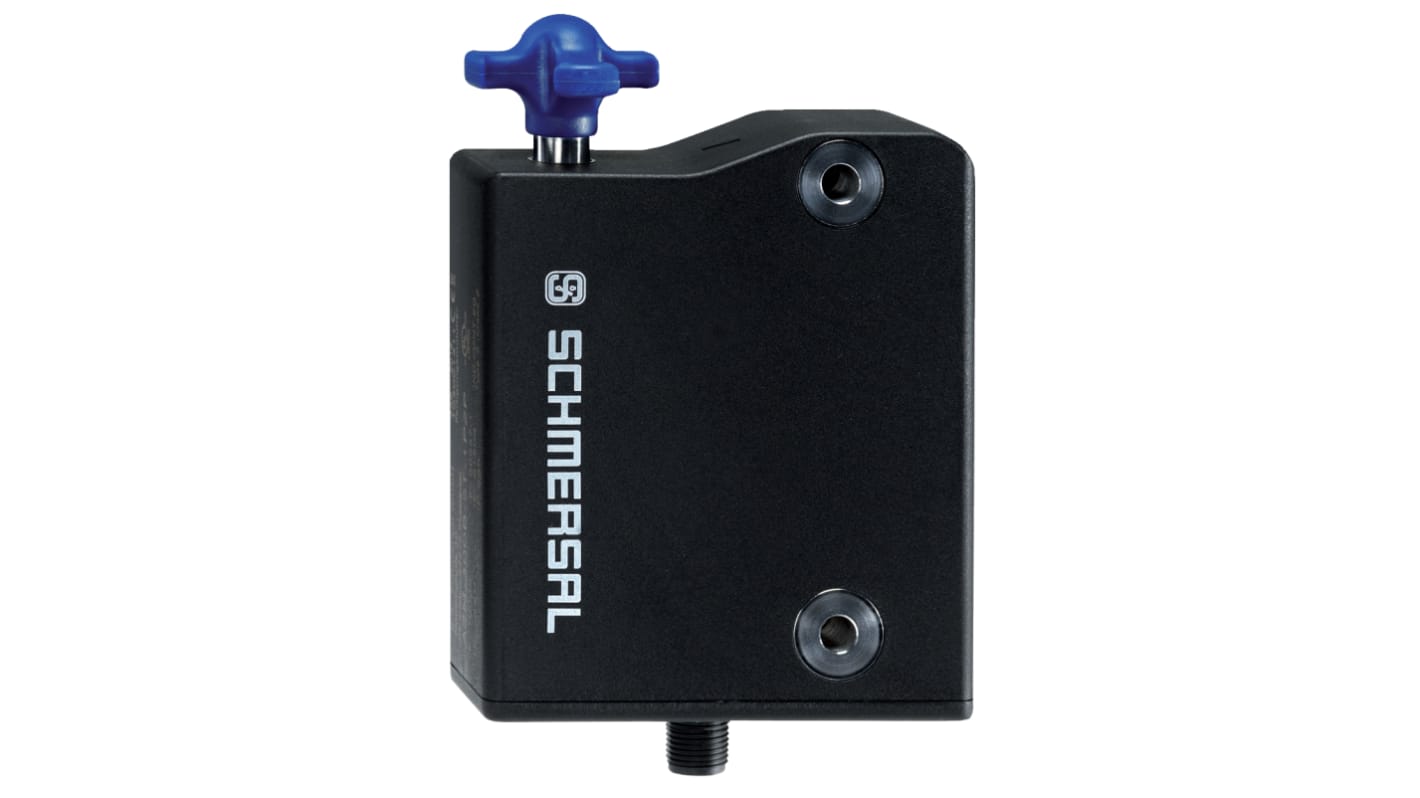Schmersal AZM 300 Series Solenoid Interlock Switch, Power to Unlock, 24V dc
- RS Stock No.:
- 880-1703
- Mfr. Part No.:
- AZM300Z-ST-1P2P
- Brand:
- Schmersal

Subtotal (1 unit)*
£560.79
(exc. VAT)
£672.95
(inc. VAT)
FREE delivery for orders over £50.00
In Stock
- 15 unit(s) ready to ship
- Plus 11 unit(s) ready to ship from another location
- Plus 17 unit(s) shipping from 15 December 2025
Need more? Click ‘Check delivery dates’ to find extra stock and lead times.
Units | Per unit |
|---|---|
| 1 + | £560.79 |
*price indicative
- RS Stock No.:
- 880-1703
- Mfr. Part No.:
- AZM300Z-ST-1P2P
- Brand:
- Schmersal
Specifications
Technical Reference
Legislation and Compliance
Product Details
Find similar products by selecting one or more attributes.
Select all | Attribute | Value |
|---|---|---|
| Brand | Schmersal | |
| Power to Lock / Unlock | Power to Unlock | |
| Supply Voltage | 24V dc | |
| Series | AZM 300 | |
| Actuator Included | No | |
| Safety Contacts | 2 PNP | |
| Conduit Entry | 1/2 in NPT | |
| Auxiliary Contacts | 1 PNP | |
| Housing Material | Plastic | |
| IP Rating | IP66, IP67, IP69K | |
| Width | 100mm | |
| Length | 85mm | |
| Maximum DC Voltage | 26.4V dc | |
| Depth | 35mm | |
| Select all | ||
|---|---|---|
Brand Schmersal | ||
Power to Lock / Unlock Power to Unlock | ||
Supply Voltage 24V dc | ||
Series AZM 300 | ||
Actuator Included No | ||
Safety Contacts 2 PNP | ||
Conduit Entry 1/2 in NPT | ||
Auxiliary Contacts 1 PNP | ||
Housing Material Plastic | ||
IP Rating IP66, IP67, IP69K | ||
Width 100mm | ||
Length 85mm | ||
Maximum DC Voltage 26.4V dc | ||
Depth 35mm | ||
- COO (Country of Origin):
- DE
Schmersal Solenoid Interlock Switch with Power to Unlock Function, 24V DC - AZM 300 Series - AZM300Z-ST-1P2P
Make your workplace safer with this solenoid interlock switch from Schmersal. It's designed to keep safety gates closed and to cut off power to machinery in hazardous situations. The unit has a supply voltage rating of 24V DC with one p-type diagnostic output and two p-type safety outputs. It uses RFID (radio frequency identification) technology for need-based protection against tampering and has three different directions of actuation.
Features and Benefits
• Suitable for both hinged and sliding guards
• Robust thermoplastic enclosure with screw terminals for longevity
• IP (ingress protection) rating of 69K offers full protection against dust, high-pressure water and high temperatures
• Three LEDs (light-emitting diodes) to easily monitor operating conditions
• Robust thermoplastic enclosure with screw terminals for longevity
• IP (ingress protection) rating of 69K offers full protection against dust, high-pressure water and high temperatures
• Three LEDs (light-emitting diodes) to easily monitor operating conditions
Application Information
• Manufacturing
• Robotics
• Rail and transport industries
• Robotics
• Rail and transport industries
How do the safety outputs work?
When the safety outputs are enabled, any error that doesn't immediately affect the function of the solenoid interlock will lead to a warning message, the disabling of the diagnostic output and the delayed shutdown of the safety outputs. Errors could include an excessively high ambient temperature, interference potential at the safety outputs or a cross-wire short.
Related links
- Schmersal AZM 300 Series Solenoid Interlock Switch 24V dc
- Schmersal AZM 300 Series Solenoid Interlock Switch 24V dc
- Schmersal AZM 200 Series Solenoid Interlock Switch 24V dc
- Schmersal AZM400Z Series Solenoid Interlock Switch, 24V dc
- Schmersal AZM 170 Series Solenoid Interlock Switch 24V ac/dc Actuator Included
- Schmersal AZM 201 Series Solenoid Interlock Switch 24V dc
- Schmersal AZM 170 Series Solenoid Interlock Switch 230V ac
- Schmersal AZM 161 Series Solenoid Interlock Switch 110V ac
